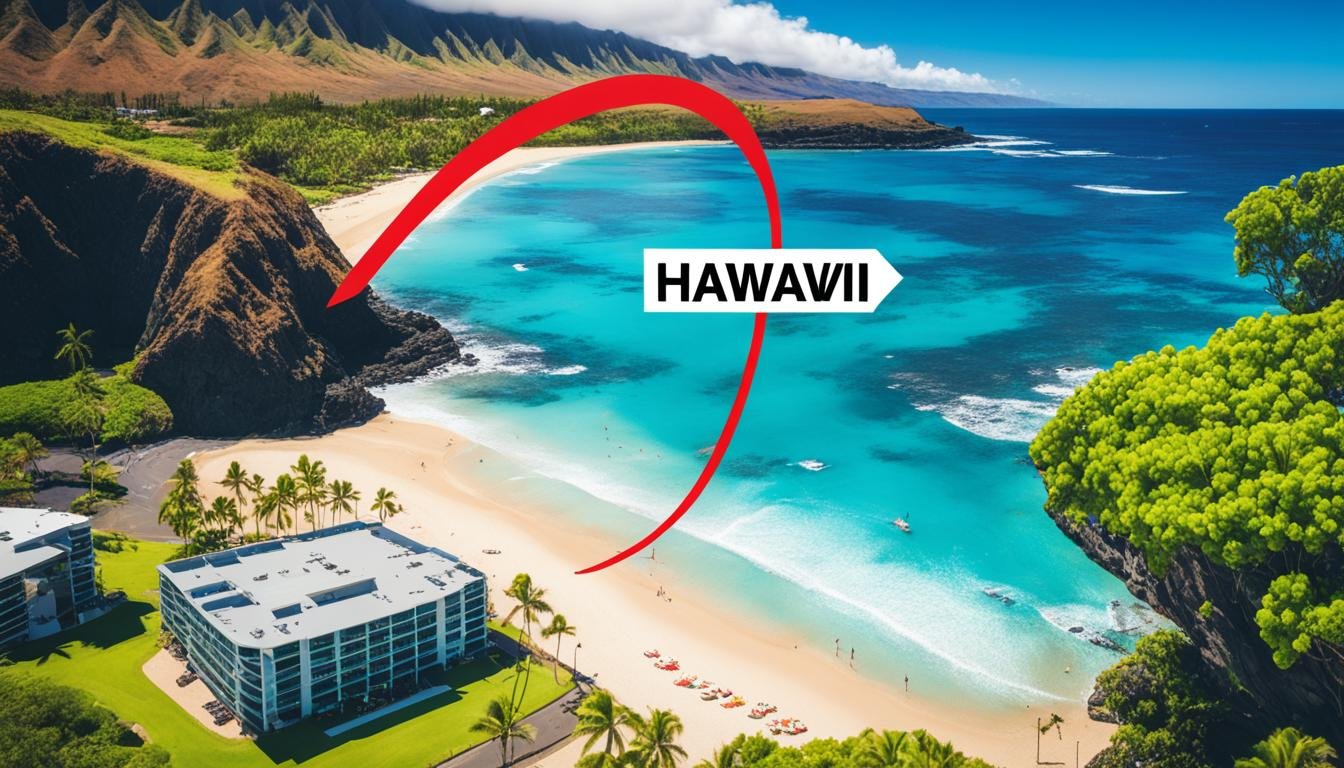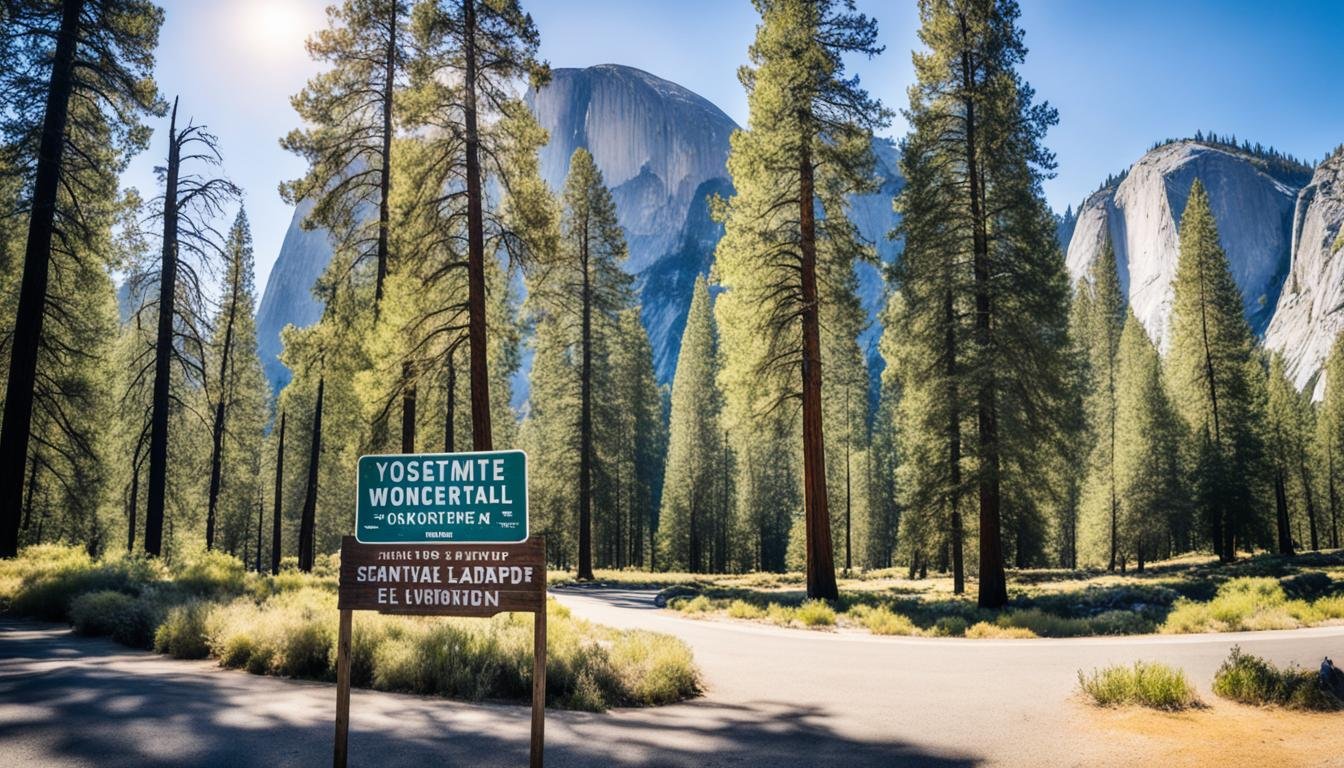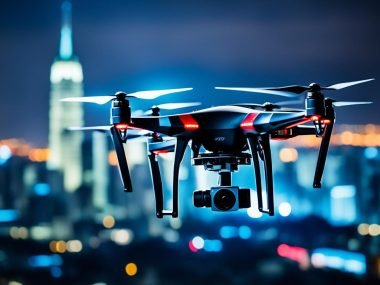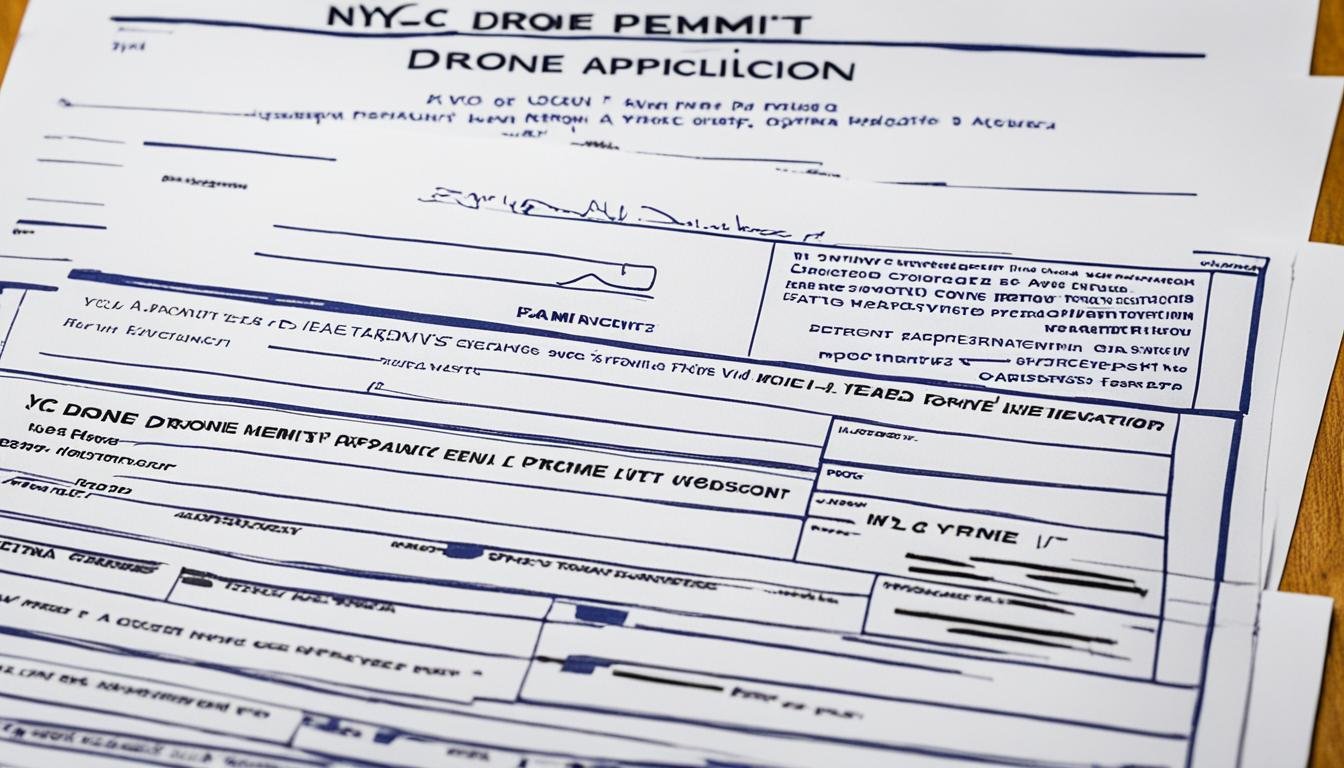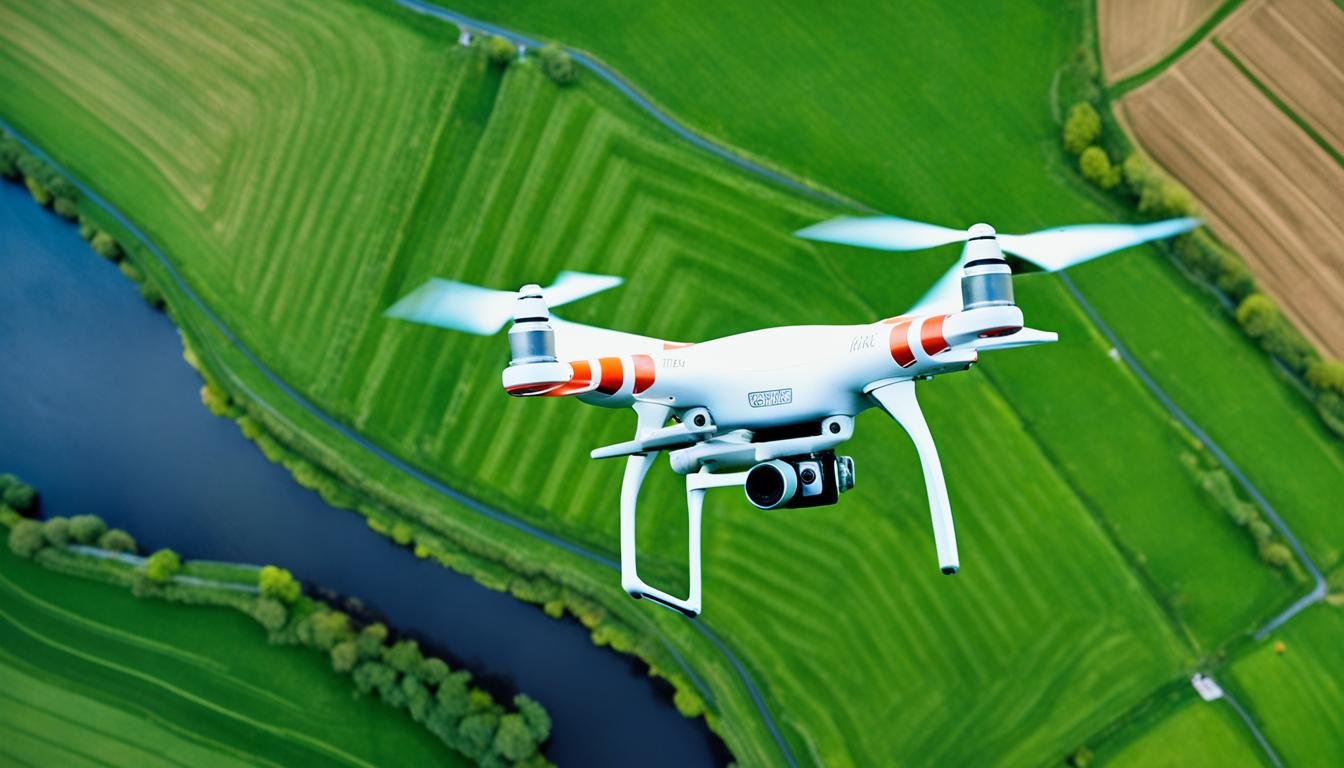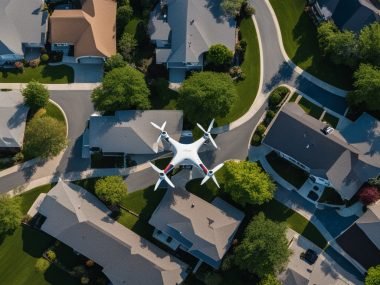Imagine flying over Hawaii’s bright, green scenes, snapping pictures that seem to beat gravity and time. Recent findings show Hawaii as a top spot where drone numbers have really grown, doubling in the last two years. People often ask: Are Drones Allowed In Hawaii? Yes, you can fly drones in Hawaii, but you must follow strict rules. These ensure public safety and protect the nature of the islands.
I looked into how to fly these drones in Hawaii’s paradise. It’s vital to fly them legally and with care. Drone pilots must balance the excitement of getting amazing shots with following the rules set by authorities. The laws in Hawaii are not just suggestions. They are your ticket to see the islands from the sky, as long as you stick to them.
Key Takeaways
- Hawaii allows drones if you follow the state and federal laws.
- Both hobby and professional drone flyers have tests and rules to follow.
- It’s important to know Hawaii’s UAV laws for legal and safe flying.
- Some local laws add extra no-fly zones, especially in parks and protected areas.
- Drones give a special way to see and capture Hawaii’s stunning views.
Understanding Hawaii Drone Laws
Flying drones in Hawaii means following specific rules. It’s crucial to stick to both federal and local laws. The beautiful skies of Hawaii welcome drones. Yet, they’re regulated to keep everyone safe and protect privacy.
Federal Drone Regulations Applicable in Hawaii
In Hawaii, drone flying follows Federal Drone Laws made by the FAA. These rules ensure drones are used safely statewide. They apply whether you’re filming Waikiki Beach sunsets or exploring volcanic landscapes for fun. Knowing federal rules is key to legal drone use.
Hawaii’s State-Wide Drone Law: SB 661 Analysis
State law SB 661 affects Hawaii drone usage too. It sets up a UAS test site and an advisory board. This law helps grow Hawaii’s drone industry safely and innovatively.
Commercial vs Recreational Drone Use in Hawaii
There’s a big difference between flying drones for work or fun in Hawaii. Commercial flyers need a Remote Pilot Certificate after passing a knowledge test. Hobbyists, however, follow simpler rules like taking the Trust and registering drones over 0.55 lbs.
| Criterion | Commercial Use | Recreational Use |
|---|---|---|
| Certification | Remote Pilot Certificate | Not Required |
| Examination Requirement | Aeronautical Knowledge Test | The Recreational UAS Safety Test (TRUST) |
| Registration | Required for all drones over 0.55 lbs | Required for all drones over 0.55 lbs |
| Operations | Part 107 Regulations | Less stringent regulations |
Managing a drone in Hawaii’s skies means being very responsible. I’m here to help with the rules. This ensures every flight is breathtaking and legal.
Navigating Commercial Drone Use Requirements
Let’s dive into Hawaii’s commercial drone use specifics. Knowing the legal and federal rules is essential. This knowledge is the key to using drones legally and successfully in Hawaii.
FAA’s Part 107 Small UAS Rule
If you want to start using drones commercially in Hawaii, you must strictly follow the FAA’s Part 107 rule. This rule takes small unmanned aircraft systems (UAS) seriously. It’s not just about following rules. It’s about ensuring safe skies and regulating drones in Hawaii.
Obtaining a Remote Pilot Certificate
To legally fly drones in Hawaii for business, passing an aeronautical knowledge test is crucial. This test checks your know-how on airspaces, weather, and drone laws. Having a Remote Pilot Certificate is a must for legal drone use in Hawaii.
Hawaii UAV Test Site and Advisory Board
Hawaii has a UAV test site that shows its dedication to the drone world. An advisory board runs this site. It’s a place for safety, innovation, and talks about using drones legally in Hawaii.
Knowing these rules helps keep drone operations safe and lets pilots use drones to their fullest in Hawaii. The drone industry is growing. It’s important to stay informed and follow the rules.
| Part 107 Requirement | Description | Impact on Commercial Drone Use in Hawaii |
|---|---|---|
| Aeronautical Knowledge Test | Test assessing knowledge of UAS operation principles | Ensures informed, responsible pilots manage drones in Hawaiian airspace |
| Remote Pilot Certification | FAA certification for UAS pilots | A legal mandate for any commercial drone operation in the state |
| UAV Test Site Access | A designated area for testing and development of UAS technologies | Facilitates innovation and practical application of drones in commercial sectors |
To sum up, following the FAA’s Part 107, getting a Remote Pilot Certificate, and using the Hawaii UAV test site are key for drone use in Hawaii. These steps make sure drones are used safely and legally, fostering growth in the drone scene.
Hawaii’s Local Drone Ordinances
As I explore Hawaii drone laws, I must point out an important fact. Even though federal rules exist, Local Drone Laws in Hawaii have their own unique rules. Drone pilots must follow these, especially in state parks, as the Department of Land and Natural Resources enforces them strictly.
The main goal of these local drone laws in Hawaii is simple. They aim to guard the state’s treasures and keep park visitors safe and private. Breaking these laws isn’t taken lightly. Violators face harsh fines and could even lose their drones.
To clarify the rules around Hawaii drone laws, I’ve put together a detailed table. It shows what you can and can’t do with drones in various state parks:
| State Park | Drone Activity Allowed | Restricted Areas | Notes |
|---|---|---|---|
| Hapuna Beach State Recreation Area | No | All Areas | Special permits required for commercial filming. |
| Waimea Canyon State Park | No | All Areas | Wildlife disturbances and erosion concerns. |
| Na Pali Coast State Wilderness Park | No | All Areas | Cultural heritage preservation. |
| Iao Valley State Monument | No | All Areas | Limited access for safety. |
| Pu’uhonua o Honaunau National Historical Park | No | All Areas | Drone use conflicts with cultural practices. |
If you’re thinking about flying a drone in Hawaii, do your homework. Always check with state departments for the latest on local drone laws in Hawaii. By planning carefully and respecting the rules, you can enjoy Hawaii’s beauty without any legal trouble.
Recreational Drone Flying in Hawaii
Flying drones in Hawaii is amazing, but you must know the Drone regulations in Hawaii. Following these rules makes sure you’re flying legally and safely. Before you fly your drone in Hawaii’s beautiful skies, learn the important steps and rules.
Taking The Recreational UAS Safety Test (TRUST)
To fly my drone right, I had to pass the Recreational UAS Safety Test (TRUST). This test makes sure pilots know the Recreational Drone Use in Hawaii and fly safely. Taking this test shows we care about flying safely and having fun.
Registering Drones Weighing More Than 0.55 lbs
Once my drone weighed over 0.55 lbs, I had to register it with the FAA. The process is easy but very important. Registering is key for Drone regulations in Hawaii. It helps keep everyone safe in the sky.
Respecting Airspace, Altitude, and Line-of-Sight Rules
It’s important to always see your drone and follow height rules in Hawaii. Flying here means respecting the sky and keeping everyone safe. It’s about enjoying the freedom to fly while following important rules.
While aiming for the clouds, remember safety comes first. These rules help make flying drones a great experience. By following them, you ensure a fun and legal drone flight in Hawaii’s beauty.
“Where Can Drones be Flown in Hawaii?”
I often get asked about the best spots for flying drones in Hawaii. The islands offer breathtaking scenes for drone flights. It’s essential to know Hawaii’s aerial photography rules first.
Exploring Drone-Friendly Locations in Hawaii
Choosing where to fly drones in Hawaii means knowing local laws. Places with less people and wildlife are best. For example, Hanauma Bay is great for capturing Hawaii’s beauty without causing harm.
Understanding Restricted Areas and Airspace
In Hawaii, be careful of no-fly zones and airspace limits. Avoid flights near airports, military bases, and national parks. Check restrictions to ensure your drone activity is both safe and legal.
Examples of Legally Permissible Flying Spots
I recommend places like Makapu’u Beach for drone flying. Its ocean views are incredible. Yet, flying in busy areas like Waikiki needs extra care due to strict rules and privacy issues.
Flying drones in Hawaii is a joy when we follow the rules. It shows respect for the environment and locals. Through careful, informed flying, we enjoy Hawaii’s beauty without harm.
The Beauty of Hawaii: A Drone Photographer’s Paradise
Hawaii is a dream spot for photographers like me. It has vibrant natural scenery and awesome coastlines. It’s perfect for drone photography. Picture the sunlight shining on waterfalls while the drone flies above. It’s beautiful. From above, Hawaii looks even more wonderful. Each flight shows it in new, exciting ways.
I’ve seen amazing places with my drone. Places like the Na Pali Coast, Waipio Valley, and Lanikai’s beaches. Everywhere you look, Hawaii shines brightly. It’s always inspiring for drone photography in Hawaii. Here, technology and nature work together. They create beautiful artwork that shows the spirit of the islands.
Let me share what I’ve seen. But I wish you could see it with your own eyes. Above Manoa Valley, my drone captures the light and the forests. Hawaii’s beauty is in each photo. Don’t you want to explore this beauty from the skies? Hawaii’s natural scenery is something to cherish and remember forever.
If you’ve never flown a drone here, you should try it. Doing so will show you why so many people love these islands. Flying here has a special rhythm. It’s guided by the sea and the wind, showing amazing sights. This is Hawaii, seen from above—a show of nature’s beauty where each photo is a message of love.
| Location | Description | Recommendation for Drone Photographers |
|---|---|---|
| Na Pali Coast, Kauai | Untouched and rugged coastline, cliffs rising over 4,000 feet. | Capture the contrast of the emerald greens against the deep blues of the Pacific. |
| Molokini Crater, Maui | A crescent-shaped, partially submerged volcanic crater. | Focus on the geometric shape and clarity of the surrounding waters. |
| Volcanoes National Park, Big Island | Home to some of the most active volcanoes in the world. | Convey the raw and dynamic energy of the land with wide landscape shots. |
| Lanikai Beach, Oahu | Known for its fine sand and clear waters, with picturesque islands in view. | Best at sunrise for soft lighting and calm ocean scenes. |
In every Hawaii trip with my drone, I’ve been amazed. Drone photography in Hawaii is more than a hobby. It’s a deep journey. I hope you feel the urge to explore too. The beauty of Hawaii’s lands waits to be captured from the skies.
Legal Guidelines for Aerial Photography in Hawaii
I love flying drones to capture Hawaii’s beauty from above. But, we must follow Hawaii drone laws and Hawaii aerial photography rules. These laws help us to take photos without harming the environment or invading others’ privacy.
When I plan to take photos in Hawaii, I first get the needed permits, especially for commercial shots. This involves following rules about where and when I can fly my drone. It’s important to know these rules to protect the scenery and people of Hawaii.
If you want to do Hawaii aerial photography, always think about people’s privacy. Flying over someone’s home without permission or taking photos where they expect privacy can get you into legal trouble.
It’s also key to follow all the flying rules. For example, staying away from wildlife and critical areas helps us avoid negative impacts. It’s vital for everyone, hobbyists and pros alike, to stay updated with Hawaii drone laws.
I’ve realized that following legal guidelines is the only way to properly capture Hawaii’s beauty. It shows our dedication to our art and to protecting these islands.
For drone users in Hawaii, our love for capturing these islands from the air is clear. By sticking to the laws, we protect our flying rights. We also help create a responsible drone flying culture for future pilots to follow.
Prohibited Areas: Where You Can’t Fly Your Drone in Hawaii
In Hawaii, knowing where you can’t fly your drone is key. Operating a UAV involves understanding Hawaii UAV restrictions and Drone no-fly zones in Hawaii. These rules help protect people’s privacy, keep everyone safe, and keep Hawaii beautiful. If you don’t follow these rules, you could face big fines and legal trouble. It’s important to know where drones are not allowed to fly.
Some places are totally off-limits for drones. This includes national parks, where protecting wildlife and nature is very important. Here, drones can bother animals and ruin the experience for visitors. Drones can’t fly over military bases for security reasons or state parks to keep peace and protect nature. Kilauea Volcano is also a no-go because of its active geology and cultural importance.
- National Parks – They’re critical for preserving Hawaii’s unique life.
- Military Installations – Off-limits for safety reasons.
- State Parks – To reduce impact on wildlife and ensure visitors have a good time.
- Kilauea Volcano and other important natural sites – For safety and to protect these areas.
For more details, below is a table showing some specific no-fly locations and the reasons:
| Location | Reason for Restriction |
|---|---|
| Hawaii Volcanoes National Park | Environmental protection and visitor safety |
| Hickam Air Force Base | National security |
| Waikiki Beach | Public privacy and high tourist density |
| Haleakalā National Park | Wildlife preservation and reference to native culture |
Remember, this is not a full list. The Drone no-fly zones in Hawaii can change. Always check with the FAA, local authorities, and the Hawaii Department of Land and Natural Resources. This means you’re up-to-date with Hawaii UAV restrictions. Flying drones carefully means we all enjoy drones without breaking laws or harming the environment.
Hawaii Drone Permits: What You Need to Know
Are you wanting to film Hawaii’s beautiful scenery with your drone? Knowing about Hawaii drone permits and drone regulations in Hawaii is vital. This knowledge is essential, whether you’re flying for fun or as a pro. Understanding local laws will make your flying smoother.
Drone Permits for Recreational Use
Flying a drone for fun in Hawaii usually doesn’t need special permits besides following Federal Aviation Administration (FAA) rules. But, you must register drones over 0.55 pounds. This process is easy and keeps you legal. Also, always follow FAA rules to be safe and legal, even if flying just for fun.
Permit Requirements for Commercial Drone Operations
Using a drone for work or business involves more steps. Firstly, you must pass a test to get a Remote Pilot Certificate from the FAA. Sometimes, you might need permission from local Air Traffic control or other authorities. This is especially true if flying near sensitive areas. Always stay informed on drone regulations in Hawaii to keep your business legal and successful.
Connecting with the Hawaii Department of Transportation
The Hawaii Department of Transportation (HDOT) is a great help for drone users. They provide info on Hawaii-specific flying rules. They can also help you use the state’s UAS test site. Contacting the HDOT can clarify Hawaii drone permits, ensuring you fly right in Hawaii.
Traveling to Hawaii with Your Drone
Before I snap stunning Hawaiian views from the sky, I double-check my drone’s packing list. I make sure it’s as clear as Hawaii’s blue skies. Packing drones for travel means organizing well and knowing airline rules. This makes the trip just as smooth as the drone’s flight.
Packing Tips for Drones on Airplanes
My drone is essential on photo trips, so I keep it safe when moving. I use a sturdy backpack or a hard case made for drones. The drone stays secure inside with foam cutouts that stop it from moving. This way, it’s safe from bumps in overhead bins.

Understanding Battery Regulations and Safety
Keeping drone batteries safe is crucial. Lithium-ion batteries, which power our drones, have air travel risks. I follow TSA guidelines and keep extra batteries in my carry-on. They’re in LIPO-safe bags to prevent short circuits and keep things safe.
Checking Airline Policies and Liabilities
Before booking my flight, I check the airline’s drone policies. Each one has different rules and size limits for carry-ons. I don’t assume they’ll be careful. Knowing their damage or loss policies helps me. It lets me plan for the worst and think about drone insurance.
Good preparation makes drone travel easy. It means my gear and I get to Hawaii ready to fly. With these tips and safe battery handling, I’m all set. Ready to capture Hawaii’s beauty from the air!
Conclusion
Drones are indeed allowed in Hawaii, opening up a world of aerial possibilities. But, they come with strict guidelines to protect privacy and Hawaiian landscapes. Understanding Hawaii’s drone laws shows the balance between flying freely and following rules.
Flying drones in Hawaii, whether for fun or business, requires knowing and respecting these laws. Hawaii’s beaches, volcanoes, valleys, and landmarks offer an amazing backdrop for drone pilots. Following the law ensures we all can keep enjoying the beauty of Hawaii from above.
So, the answer to “Are Drones Allowed In Hawaii?” is yes, but only if we follow the law. Learning about Hawaii’s drone laws has made me more committed to safe and legal drone flying. Let’s keep enjoying Hawaii’s beauty from the skies, while sticking to the rules that protect it.

